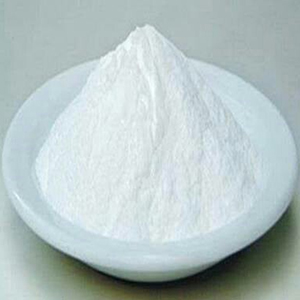
Ph Eur
C8H8HgO2 --- 336.7 --- 62-38-4
Action and use: Antiseptic, antimicrobial preservative.
DEFINITION
Content: 98.0 per cent to 100.5 per cent (dried substance).
CHARACTERS
Appearance: White or yellowish, crystalline powder or small, colourless crystals.
Solubility: Slightly soluble in water, soluble in acetone and in alcohol.
IDENTIFICATION
First identification A.
Second identification B, C.
A. Infrared absorption spectrophotometry.
B. To 5 ml of solution S (see Tests) add 5 ml of water and 0.1 ml of sodium sulphide solution. A white precipitate is formed that darkens slowly on heating.
C. To 10 ml of solution S add 2 ml of potassium iodide solution and shake vigorously. Filter. The filtrate gives reaction (b) of acetates.
TESTS
Solution S: Dissolve 0.250 g in 40 ml of water by heating to boiling. Allow to cool and dilute to 50 ml with water. Prepare the solution immediately before use.
Appearance of solution: Solution S is not more opalescent than reference suspension and is colourless.
Ionised mercury: Maximum 0.2 per cent.
Polymercuric benzene compounds: Maximum 1.5 per cent.
Loss on drying: Maximum 0.5 per cent, determined on 0.500 g by drying in an oven at 45C for 15 h.
C8H8HgO2 336.74
Mercury, (acetato-O)phenyl-.
(Acetato)phenylmercury [62-38-4].
Phenylmercuric Acetate contains not less than 98.0 percent and not more than 100.5 percent of C8H8HgO2.
Identification:
A: Add 0.5 mL of nitric acid to 0.1 g of it, warm gently until a dark brown color is produced, and dilute with water to 10 mL: the characteristic odor of nitrobenzene is evolved.
B: To 0.1 g of it add 0.5 mL of sulfuric acid and 1 mL of alcohol, and warm: the characteristic odor of ethyl acetate is evolved.
C: To 5 mL of a saturated solution in water add a few drops of sodium sulfide: a white precipitate is formed, which turns black when the mixture is boiled and then allowed to stand.
Melting range: between 149 and 153 .
Residue on ignition: not more than 0.2%.
Mercuric salts and Heavy metals: Heat about 100 mg with 15 mL of water, cool, and filter. To the filtrate add a few drops of sodium sulfide: the resulting precipitate shows no immediate color.
Polymercurated benzene compounds: Shake 2.0 g with 100 mL of acetone, and filter. Wash the residue with successive portions of acetone until a total of 50 mL is used, then dry the residue at 105C for 1 hour, and weigh: the weight of the residue does not exceed 30 mg (1.5%).
Assay: Transfer about 500 mg of Phenylmercuric Acetate, accurately weighed, to a 100-mL flask, add 15 mL of water, 5 mL of formic acid, and 1 g of zinc dust, and reflux for 30 minutes. Cool, filter, and wash the filter paper and the amalgam with water until the washings are no longer acid to litmus. Dissolve the amalgam in 40 mL of 8 N nitric acid. Heat on a steam bath for 3 minutes, and then add 500 mg of urea and enough potassium permanganate to produce a permanent pink color. Cool, decolorize the solution with hydrogen peroxide, add 1 mL of ferric ammonium sulfate, and titrate with 0.1 N ammonium thiocyanate VS. Each mL of 0.1 N ammonium thiocyanate is equivalent to 16.84 mg of C8H8HgO2.